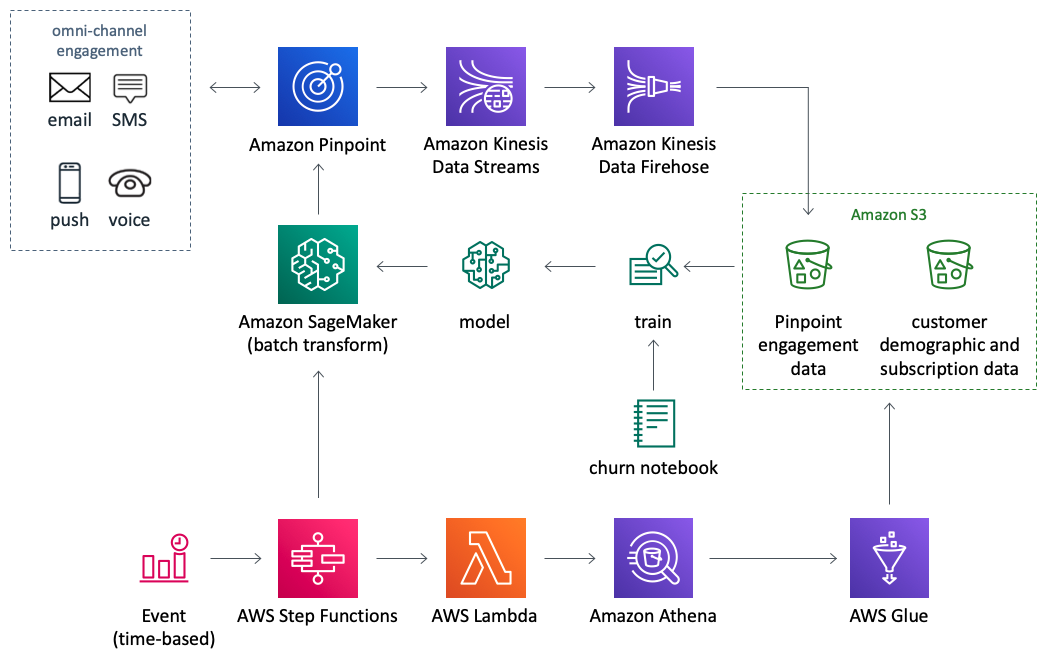AWS Messaging Blog
Predictive Segmentation Using Amazon Pinpoint and Amazon SageMaker Solution
Note: This post was written by Ryan Lowe, an AWS Solution Architect and the author of the Predictive Segmentation Using Amazon Pinpoint and Amazon SageMaker Solution.
Businesses increasingly find themselves spending more time competing for a decreasing share of customers’ attention. A natural result of this competition is an increase in the cost of acquiring new customers. For this reason, it’s important for businesses to not only retain their customer bases, and to ensure that they stay engaged. Machine Learning is a powerful tool that can help you meet this need. By using machine learning to create customer segments in Amazon Pinpoint, you can create more relevant and targeted communication experiences for your customers, which can lower your churn rates, increase loyalty, and drive higher conversion rates.
Today, we’re launching a new AWS Solution: Predictive Segmentation Using Amazon Pinpoint and Amazon SageMaker. This solution provides a simple way to use machine learning to more effectively target your customers. Your Data Science team can use Amazon SageMaker to train their models using existing customer engagement data. They can then quickly connect their models directly to Amazon Pinpoint to create highly targeted customer segments. Marketers can then use these segments to start sending messages. The event data for those events is then fed back into Amazon SageMaker, where it helps to train and refine the machine learning model.
The following diagram illustrates the flow of data in this solution.

In this solution, customer engagement and segmentation data are sent from Amazon Pinpoint to Amazon S3 buckets via Amazon Kinesis. The data in these S3 buckets is crawled daily and added to an AWS Glue Data Catalog.
Separately, a daily process, orchestrated by AWS Step Functions, uses a series of Lambda functions to query customer data. The process uses Amazon Athena to execute a series of queries against the AWS Glue Data Catalog. Amazon SageMaker uses this data to create predictions based on a trained ML model.
When you deploy this solution, it creates fictitious customer and engagement data. You can combine this sample data with the Jupyter notebook provided with this solution to train and deploy a basic churn model.
Before you deploy this solution in production, we recommend that you consult with a data scientist who can train a machine learning model that’s tailored to your actual customer data.
To get started, visit the Predictive Segmentation Using Amazon Pinpoint and Amazon SageMaker page on the AWS Solutions site.